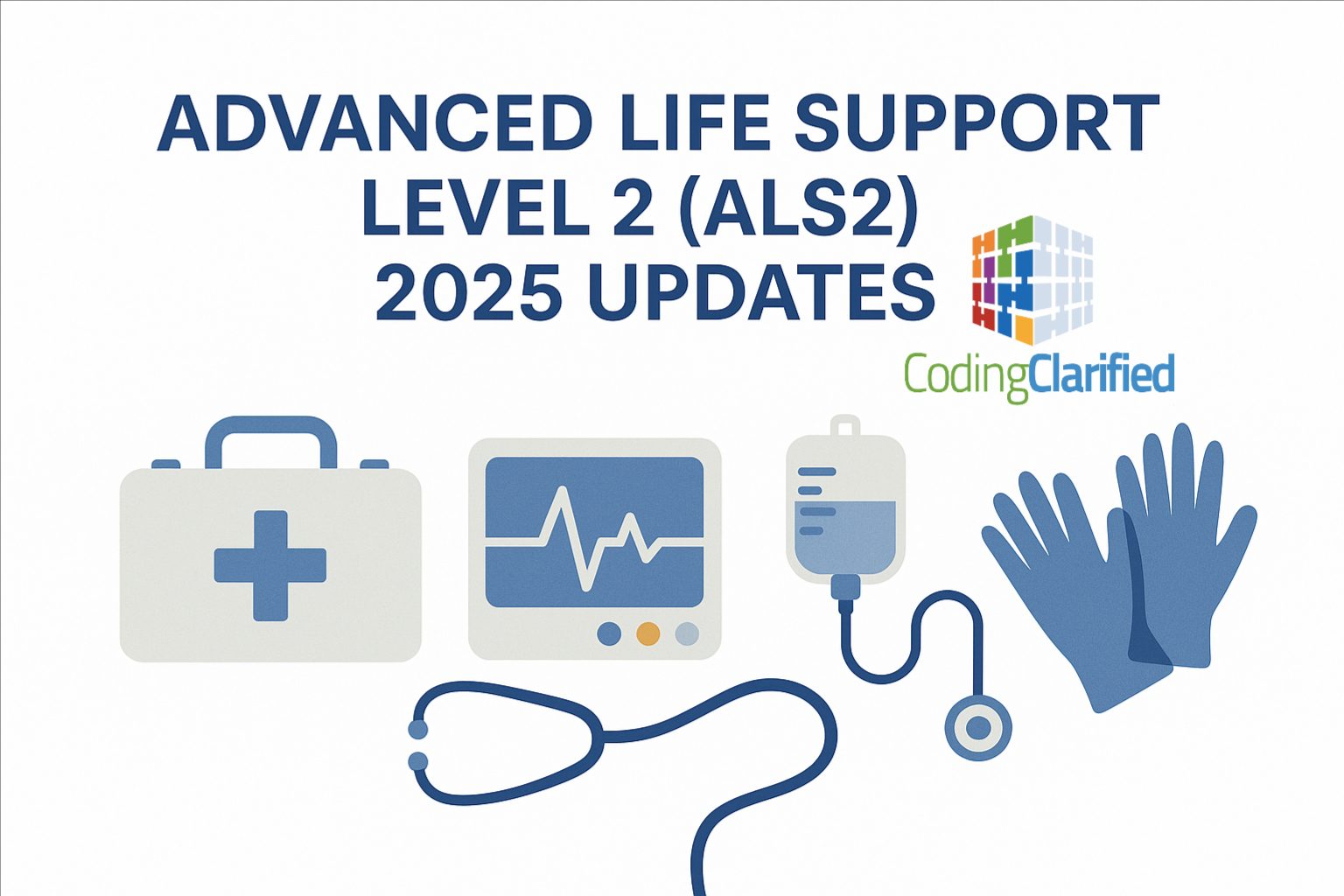What Is ALS2?
Advanced Life Support Level 2 (ALS2) is the highest level of ground ambulance service defined by the Centers for Medicare & Medicaid Services (CMS). It includes advanced procedures beyond ALS1, such as:
-
Administration of three or more medications (IV, IM, or SQ)
-
Manual defibrillation/cardioversion
-
Endotracheal intubation
-
Central venous line placement
-
Chest decompression, intraosseous line, or transtracheal jet ventilation
HCPCS Code: A0433
The HCPCS code for ALS2 remains A0433, which is billed per transport.
The Centers for Medicare & Medicaid Services (CMS) finalized changes in the Calendar Year (CY) 2025 Physician Fee Schedule (PFS) regarding the definition of Advanced Life Support, Level 2 (ALS2) procedures for ambulance services.
Previously, the definition of ALS2 for ambulance services included certain medications and complex medical procedures. The new guidelines expand this definition to include prehospital blood transfusions (PHBTs).
This means that ground ambulance transport involving PHBTs, such as the administration of low titer O+ or O- whole blood, packed red blood cells, or plasma, can now qualify as an ALS2-level transport.
While this expands the services covered under ALS2, it’s important to note that CMS did not propose additional funding for these services, as most transports involving whole blood were already reimbursed at the ALS2 level or higher due to the presence of other ALS2 procedures.
2025 Coding Updates for Advanced Life Support Level 2
Rule Changes to Know
-
Updated Definition of “Medication Administration”
CMS clarified that saline or glucose solutions alone no longer count toward the three-medication minimum for ALS2 unless accompanied by therapeutic agents. Medications must have therapeutic intent, not just serve as vehicles. -
Expanded List of Qualifying Procedures
New guidance includes continuous positive airway pressure (CPAP) and automatic chest compression devices as acceptable ALS2-level procedures if medically necessary and properly documented. -
Emphasis on Documentation
Claims must include clear narratives and procedure timestamps. ALS2 services without strong documentation are now more frequently denied during audits. -
Bundled Services Clarification
ALS2 continues to bundle services like oxygen, EKG monitoring, and routine airway management. Coders should not bill separately for these elements if ALS2 is billed.
Common Errors to Avoid
-
Reporting A0433 without confirming three qualifying meds or at least one ALS2-level procedure
-
Failing to document the name, dose, and route of each medication
-
Missing certification of medical necessity
-
Billing ALS2 when ALS1 would suffice (risk of overpayment and audit flags)
Tips for Accurate ALS2 Coding
-
Review run sheets closely for qualifying interventions
-
Verify protocol to ensure treatments meet ALS2 criteria
-
Coordinate with EMS teams to improve documentation compliance
-
Use real-time documentation tools when available
The new ALS2 rules highlight the need for clear, defensible documentation and a strong understanding of qualifying criteria. Coders, billers, and EMS professionals must work together to ensure proper reporting and reimbursement
NAAC represents the industry’s “Gold Standard of Excellence” in compliance, ethics, and integrity in all facets of ambulance compliance.
Medical Coding HCPCS Medical Supplies https://codingclarified.com/medical-coding-hcpcs-medical-supplies/

